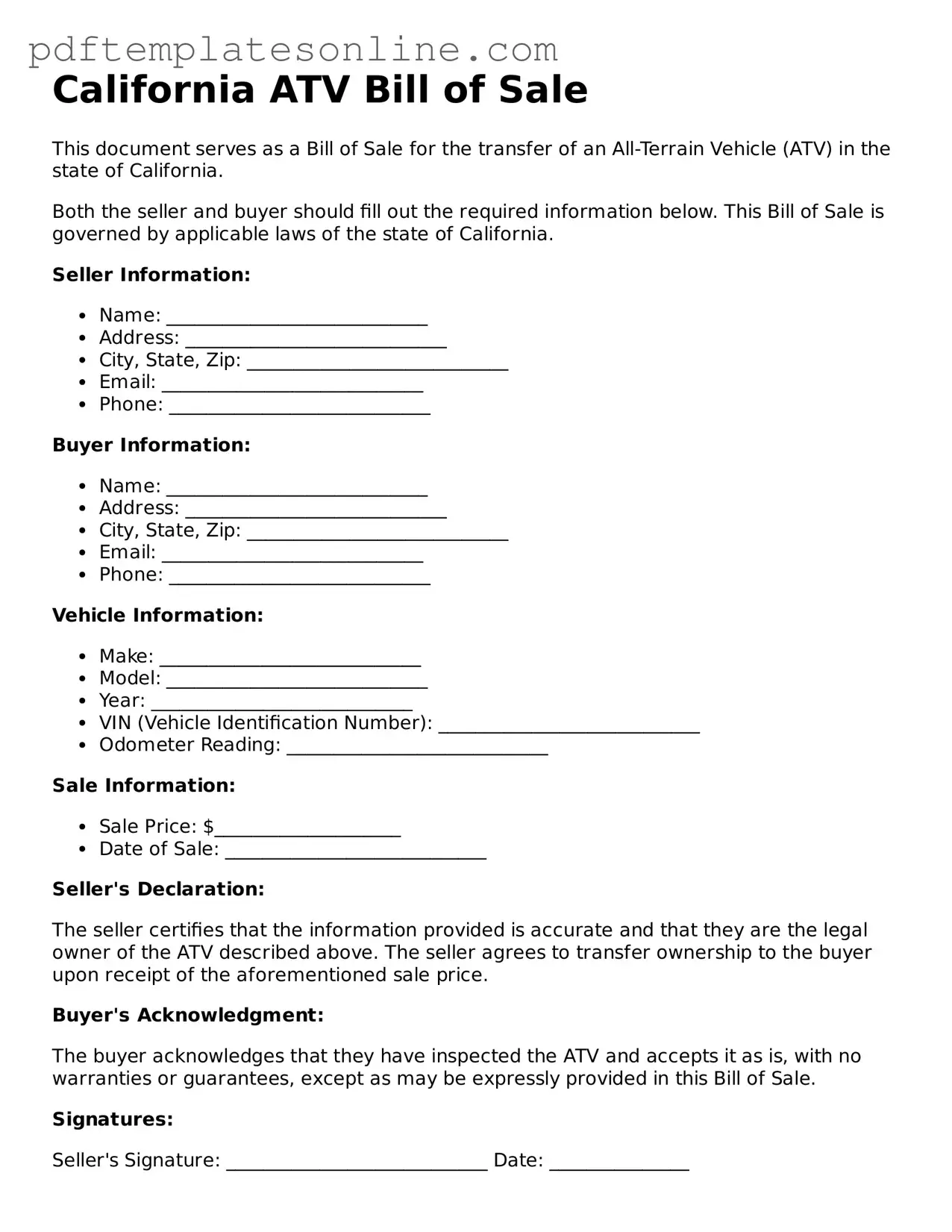Filling out the California ATV Bill of Sale form can seem straightforward, but many people make common mistakes that can lead to confusion or delays. One frequent error is not providing accurate vehicle information. It's essential to double-check the ATV's make, model, year, and Vehicle Identification Number (VIN). Missing or incorrect details can cause issues when transferring ownership.
Another mistake is neglecting to include both the buyer's and seller's information. This includes full names, addresses, and contact numbers. Omitting this information can complicate future communications and may even lead to disputes over ownership.
Many individuals forget to sign the form. Both parties must sign to validate the sale. Without signatures, the document is incomplete and may not be recognized by the Department of Motor Vehicles (DMV).
Some people also overlook the date of the sale. Failing to include the correct date can create problems later, especially if there are questions about when the transfer took place. It's a simple detail but crucial for record-keeping.
Another common error is not providing a fair purchase price. It's important to state the amount clearly. If the price is left blank or listed as $0, it raises red flags during the registration process.
Additionally, people sometimes forget to check the odometer reading. Including this information is important for transparency. An inaccurate reading can lead to mistrust between the buyer and seller.
Not keeping a copy of the completed Bill of Sale is another mistake. Both parties should retain a copy for their records. This documentation is vital if any issues arise in the future.
Some individuals fail to understand the importance of having a witness or notarization. While not always required, having a witness can provide an extra layer of security and legitimacy to the transaction.
Lastly, people often rush through the form. Taking the time to read through each section carefully can prevent many of these mistakes. A little patience goes a long way in ensuring a smooth transfer of ownership.
